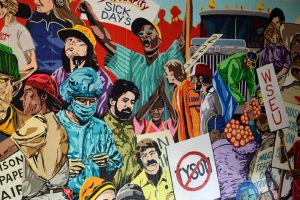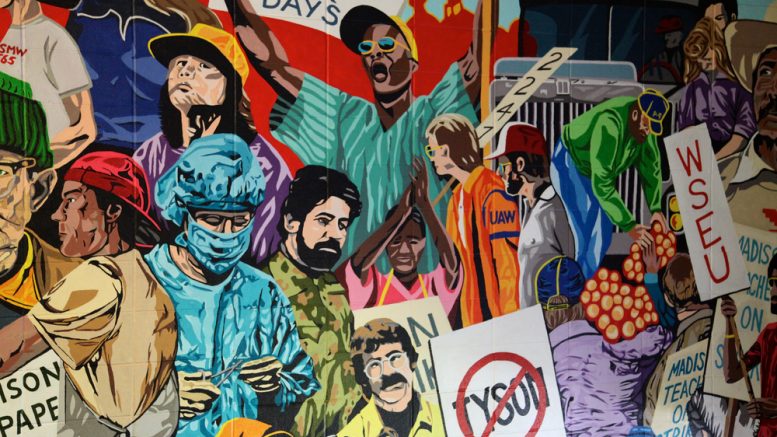
By Tom Crofton
The Commoner Call (6/19/17)
Further information on the unique design of the German labor movement is provided in the investigative work “Faster, Higher, Farther: The Volkswagen Scandal” by Jack Ewing. The irony that a management scandal occurred under the highly regarded German combined labor/management system will be discussed at the end of this piece, but the precedent for labor taking more than an adversarial role is worth investigating more deeply.
Ewing writes:
“When the British gave up administrative control of Volkswagen in 1949, they passed ownership to the German Federal government, which delegated control to the state of Lower Saxony. In 1960 the free-market oriented government decided to sell 40% of VW on the stock market. Workers, fearing the influence of profit oriented investors, tried to block the sale. As a political compromise, VW employees won special concessions later enshrined by the German Parliament. According to what became known as the Volkswagen Law, decisions to open new factories or to transfer work to different locations required a two-thirds vote of the supervisory board. Since the workers had half the seats on the board, the law gave them veto power.” (page 25)
This presence on the company’s board of directors translated into real labor power in the political process as well, Ewing notes:
“Because of VW’s unique shareholder structure, no person could become chief executive without the support of the workers. The state of Lower Saxony retained a large block of shares as well as two seats on the supervisory board. The politicians almost always voted with labor…because it was difficult for a politician of any stripe to vote against the perceived interests of workers at the state’s largest private employer.” (page 49)
World market conditions and changes to the manufacturing process caused VW to adopt the new methods of leaner just-in-time production methods and organization and the team approach first developed in the US by American engineer and management consultant William Edwards Deming and taken up with a vengeance in the Japanese kaizen (“change for the better”) manufacturing system.
“For example,” Ewing notes. ” Female workers in a VW upholstery department complained that it was difficult to pull the covers over headrests. After employees and supervisors met to discuss the problem, someone found an unused machine that was modified to compress the foam padding on the headrest, so the cover could be pulled on fast with less effort.” (page 51)
“It did not take a long time for the manufacturing efficiency campaign to take off. Even after instituting a hiring freeze and pushing some employees into early retirement, the company had 30,000 more people than it needed. Peter Hartz, a steel industry executive, (w)as head of personnel. The son of an iron worker, Hartz had been a member of the IG Metal auto and metal workers union earlier in his career and was a social democrat. Hartz negotiated an agreement with the company’s German employees for a 4-day week. The workweek was cut to 28.8 hours instead of 36. At VW, few things are more sacred than the worker’s right to be at the table when decisions are made. The partnership between management and labor is viewed not as a handicap but as essential element in VW’s rise and, indeed an example to the world.” (page 56)
“A cooperative relationship between workers and management was a central tenant of Rhineland Capitalism, the post war economic model that was designed to be a humanistic riposte to East German style socialism. The system is known as Mitbestimmung or codeterminaton. The law gives employees the right to elect workers councils, which must be consulted before a factory can, for example, introduce weekend shifts or make job cuts. At any company organized as a stock corporation, workers hold half the seats on the supervisory board, which oversees top management.” (page 57)
Unfortunately this labor/management model failed to prevent the 2015 VW diesel emissions cheating scandal which continues to unfold as a costly scandal that has impacted the company, its bottom line and dented its hard-earned international brand.
Corporate swindle and ‘old-boy’ corruption
Management had decided to use the popular image and stellar reputation of German Engineering to cloud the fact that their “clean diesel” cars were not able to pass US and European Union standards for nitrogen oxide pollution. Instead of adopting known solutions that would cost a little more, or require more regular maintenance, the engineers were directed to use a computer program to cheat while vehicles were on a static test stand and then belch out as much as 40 times the amount allowed by law out on the streets. These decisions were not made at the level of labor/management codetermination. The top execs who ordered it blamed the action on their middle management. The unraveling of this scandal has also exposed some bad behavior by those worker representatives closest to management.
The ability of “good old boy” relationships between labor council leadership and management including payoffs, sex scandals, and other anti-worker behavior by its representatives proves again that union democracy is a daily struggle that must always be waged by the rank and file. Efforts to improve productivity to help pay for better wages and conditions are in the workers’ power to grant, and in a better world are empowering acts of responsible, conscientious adults, but the representatives who carry the water for workers need to be held accountable by the rank and file.
Some of us have long argued for a continual refreshing of leadership in our unions from the ranks of production workers, and a return of leadership to the production lines to remember what we go through daily. Clearly, an international approach to new organizing efforts, where we use best practices from around the world, can open the door to a better life for workers, but we need to stay engaged in the process to achieve our goals.
(Art from Labor Temple mural, Madison, WI.)

